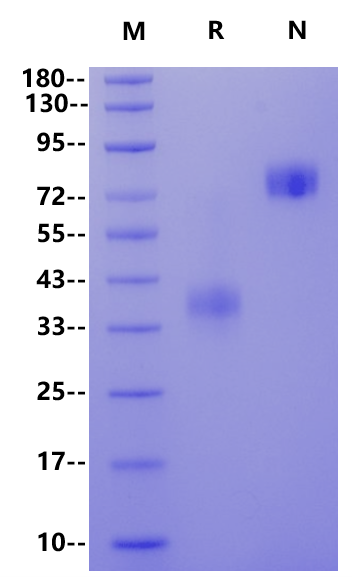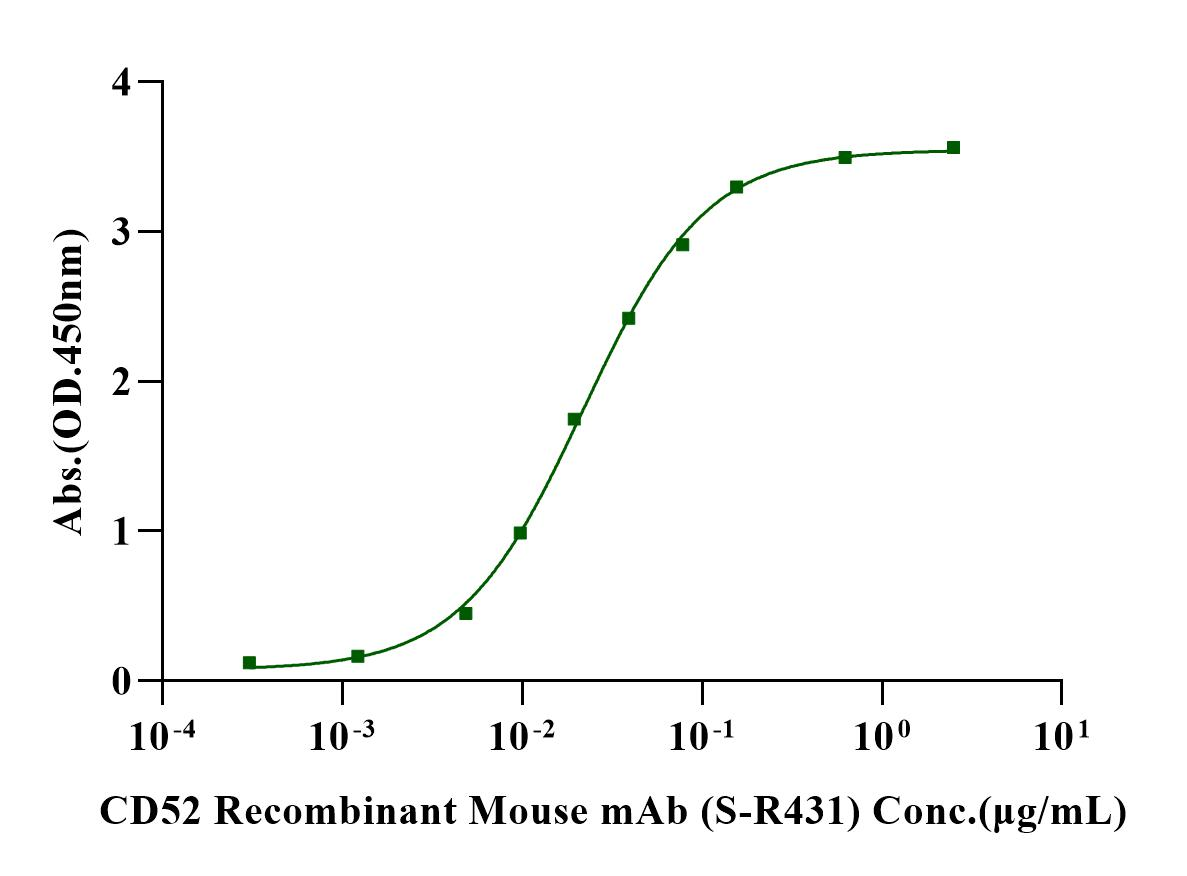Gly25-Ser36, with C-terminal Human IgG1 Fc GQNDTSQTSSPSIEGRMDPKSSDKTHTCPPCPAPELLGGPSVFLFPPKPKDTLMISRTPEVTCVVVDVSHEDPEVKFNWYVDGVEVHNAKTKPREEQYNSTYRVVSVLTVLHQDWLNGKEYKCKVSNKALPAPIEKTISKAKGQPREPQVYTLPPSRDELTKNQVSLTCLVKGFYPSDIAVEWESNGQPENNYKTTPPVLDSDGSFFLYSKLTVDKSRWQQGNVFSCSVMHEALHNHYTQKSLSLSPGK
35-40kDa
Reconstitute at 0.1-1 mg/ml according to the size in ultrapure water after rapid centrifugation.
1、Koyama K. et al. (2009) Functional aspects of CD52 in reproduction. J Reprod Immunol. 83(1-2): 56-59.
CD52, also known as CAMPATH-1 antigen, HE5, and gp20, is a cell surface glycoprotein that can be targeted to induce immune suppression by complement-mediated cell lysis. CD52 is a GPI-anchored protein present in lymphocytes and male reproductive tissues (mrt) including mature sperm and seminal plasma. It has been shown that mrt-CD52 is synthesized in epithelial cells of the epididymis and vas deferens, but not in the testis. The mrt-CD52 is transported to mature sperm during sperm transition in the male reproductive tract. Lymphocyte CD52 functions to stimulate suppressor T cell induction, while mrt-CD52 is associated with seminogelin and involved in clot formation and liquefaction of semen. It protects sperm against anti-sperm antibodies by binding to C1q and inhibiting complement activation.


Immobilized CD52 Fc Chimera Protein, Human (Cat. No. UA010305) at 2μg/mL (100μL/well) can bind CD52 Recombinant Mouse mAb (S-R431) (Cat. No. S0B0685) with EC50 of 19.86-24.09ng/ml.